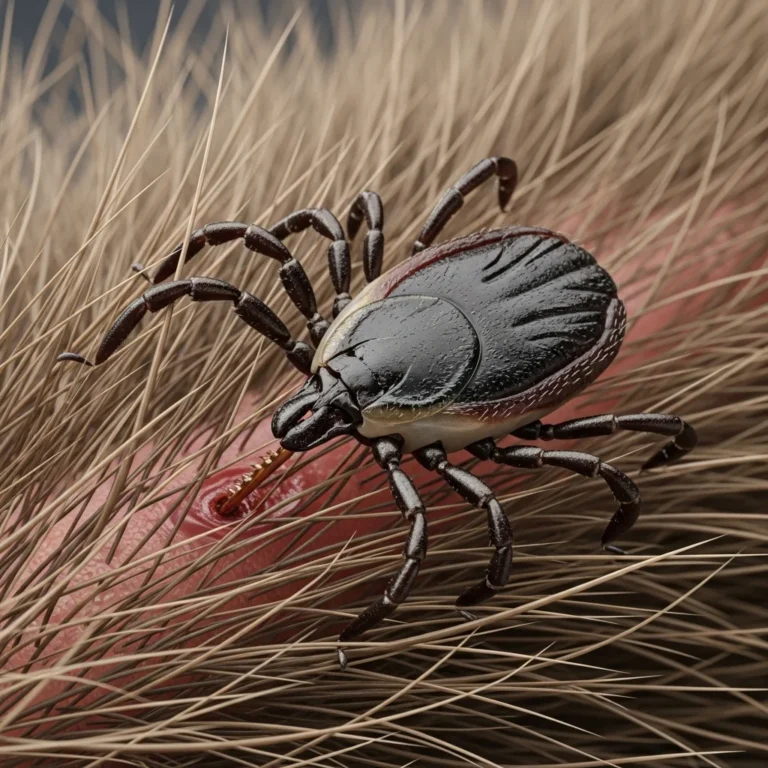
Anaplasmosis In Dogs
icks… those tiny, creepy little freeloaders that hitch a ride on your pup after a walk in the woods. Not only are they gross, but they can also spread some nasty stuff. One of the sneakiest? Anaplasmosis in dogs. It’s a tick-borne infection that can make your pup achy, tired, and just not themselves. The tricky part? The signs are super vague. Some dogs just look a bit “meh” and you’d never guess a tick is behind it. The good news? With quick treatment, most dogs bounce back like nothing ever happened.
What is anaplasmosis in dogs
So, what exactly is this long, tongue-twisting word? Anaplasmosis is basically a bacterial infection passed along by tick bites. The main troublemakers are Anaplasma phagocytophilum (common in the U.S.) and Anaplasma platys (hanging out more in warmer spots). These little guys mess with your dog’s immune system and blood, which explains the weird mix of symptoms.
Dr. Susan Little from Oklahoma State University says, “Anaplasmosis remains one of the most underdiagnosed tick-borne infections because of its ability to hide behind generalized symptoms” (OSU Veterinary Medicine). Translation? It’s sneaky, and a lot of owners miss it.
Anaplasmosis in dogs symptoms
Here’s the tricky part: anaplasmosis in dogs symptoms don’t always look the same. Some dogs are totally fine, while others act like they’ve been hit with the flu.
Look out for things like:
- Low energy or “I don’t feel like fetching today” vibes
- Fever
- Limping or stiff joints (sometimes it switches from leg to leg)
- Skipping meals
- Upset tummy in more serious cases
- Bruises (yep, dogs can bruise if platelets drop)
Dr. Richard Goldstein from the Animal Medical Center in NYC points out that even small changes, like your dog refusing stairs, could be a red flag (AMC NYC). Better safe than sorry.
Anaplasmosis in dogs causes
The short version? Ticks. Dogs pick it up after being bitten by ticks that carry the bacteria. The more your pup loves the outdoors, the higher the risk.
Things that boost their chances of catching it:
- Hanging out in wooded or grassy spots
- Being around deer or rodents (tick taxis, basically)
- Warm, humid months when ticks are everywhere
- Skipping monthly tick prevention
The CDC points out that where dogs are getting anaplasmosis, humans usually are too (CDC). So if your dog gets it, consider it a warning sign for your family as well.
What is the best treatment for anaplasmosis?
antibiotics for anaplasmosis in dogs and expert guidance
The go-to fix? Doxycycline. It’s the superstar antibiotic for anaplasmosis in dogs, usually given for a few weeks. Most pups perk up within just a couple of days on it.
Other options sometimes used are:
- Minocycline (if doxycycline isn’t around)
- Imidocarb dipropionate (used for tougher cases)
Dr. Edward Breitschwerdt from North Carolina State University says, “Rapid initiation of doxycycline not only resolves clinical signs quickly but also minimizes complications in chronic cases” (NCSU VetMed). Basically: don’t wait around—get that treatment started.
Sometimes dogs also need pain relief, fluids, or a little TLC depending on how rough they’re feeling. One important thing: never just grab antibiotics on your own. Wrong meds or wrong doses can actually make things worse.
Anaplasmosis in dogs treatment cost
Let’s be real—vet bills aren’t fun. Testing usually costs $60–$120, and full blood panels can run $200–$300. The antibiotic treatment is often $100–$250.
But if your dog’s really sick and needs to stay at the clinic? You could be looking at $1,000+. Pet insurance often covers tick-borne stuff, so double-check your plan. It might save you a lot of stress.
What is the mortality rate for anaplasmosis in dogs?
Here’s some relief: the survival rate is super high if you catch it early. Less than 5% of cases are fatal, and that’s usually when treatment was delayed.
Dr. Michael Lappin from Colorado State University explains that ignoring symptoms can make things way worse than you’d expect (CSU Veterinary Hospital). So yeah, quick vet visits matter.
How long can anaplasmosis flare up in dogs?
Most dogs recover fully after a round of treatment, but sometimes the infection hangs around quietly. That’s when flare-ups pop up later—things like limping again or running a fever. Stress or a weakened immune system can also trigger it.
That’s why vets often recommend follow-up bloodwork, just to be sure the bacteria are really gone.
Is anaplasmosis in dogs contagious to humans
Nope—you’re not catching it from cuddles or kisses with your pup. But both you and your dog can get it from the same tick species. So if your dog’s infected, it’s basically a sign that ticks in your area are carrying the bacteria.
The CDC suggests doing tick checks, using repellents, and keeping your yard tidy to protect both pets and humans.
FAQ
Can dogs fully recover from anaplasmosis?
Yes! Most bounce back completely with antibiotics. Some may still deal with achy joints here and there, but it’s rare.
What to do if my dog has anaplasmosis?
Call your vet, get the tests done, and follow their treatment plan. No DIY treatments here.
How serious is anaplasmosis in dogs symptoms?
It can be mild or really rough. If untreated, it can spiral into bigger health problems.
How do you treat anaplasmosis in dogs naturally?
Natural remedies (like omega-3s for joint health) can help your pup feel better, but antibiotics are the real cure. Use natural care as a sidekick, not the main fix.
What is the late stage of anaplasmosis?
Late stages can lead to bleeding problems, neurological issues, or immune system chaos. Definitely not something you want to risk.
Can anaplasmosis cause kidney failure in dogs?
In rare, advanced cases—yes. Severe inflammation can put strain on the kidneys.
Can amoxicillin treat anaplasmosis?
Nope. Amoxicillin doesn’t work against this bacteria. Stick with doxycycline or other tetracyclines.
Conclusion
So here’s the bottom line: anaplasmosis in dogs is one of those “silent but serious” infections. It’s spread by ticks, looks a lot like other illnesses, and can be hard to spot. But with quick vet care and the right antibiotics, most dogs make a full comeback. The real trick? Preventing it in the first place with good tick protection. Trust me, it’s way easier (and cheaper) than dealing with the aftermath.
please leave comment
you may like it






